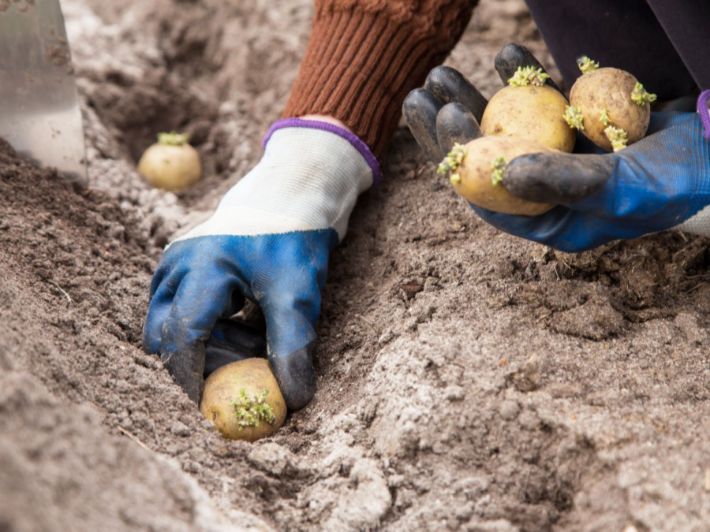Potatoes are a versatile and popular crop grown worldwide. They are relatively easy to cultivate and can yield a substantial harvest with proper care. This guide outlines the essential steps for growing potatoes successfully.
1. Selecting Seed Potatoes
Choose healthy, certified seed potatoes from a reputable supplier. Avoid using potatoes from the grocery store as they may be treated with chemicals to prevent sprouting. Seed potatoes should have at least one or two “eyes” (buds) from which the plants will grow.
2. Preparing the Soil
Potatoes thrive in well-drained, loose soil with a pH between 5.0 and 7.0. Prepare the soil by tilling it to a depth of about 12 inches and removing any stones or debris. Adding compost or well-rotted manure can improve soil fertility and structure.
3. Planting
Cut the seed potatoes into pieces, ensuring each piece has at least one eye. Allow the cut pieces to dry for a day or two to prevent rotting. Plant the potato pieces in trenches or holes about 4 inches deep and 12 inches apart, with rows spaced 24 to 36 inches apart. Cover them with soil.
4. Watering
Potatoes need consistent moisture, especially during the tuber formation stage. Water the plants regularly, ensuring the soil remains moist but not waterlogged. Overwatering can lead to rot, while underwatering can reduce yield.
5. Hilling
As the potato plants grow, mound soil around the base of the plants to cover the lower stems and developing tubers. This process, known as hilling, helps protect the tubers from sunlight (which can cause greening and bitterness) and supports the plants.
6. Fertilizing
Potatoes benefit from balanced fertilization. Apply a balanced fertilizer (such as 10-10-10) at planting and again when the plants are about 6 inches tall. Avoid excessive nitrogen, as it can promote foliage growth at the expense of tuber development.
7. Pest and Disease Management
Monitor the plants for common pests such as potato beetles and aphids. Use organic or chemical controls as needed. To prevent diseases, practice crop rotation and avoid planting potatoes in the same spot more than once every three years.
8. Harvesting
New potatoes can be harvested about 10 weeks after planting when the plants begin to flower. For mature potatoes, wait until the foliage turns yellow and dies back. Carefully dig up the tubers with a garden fork, being cautious not to damage them.
9. Storing
Allow the harvested potatoes to cure in a cool, dark, and well-ventilated area for about two weeks. This process toughens their skins for better storage. Store the cured potatoes in a cool, dark place with good ventilation to prevent sprouting and rotting.
Conclusion
Growing potatoes can be a rewarding experience with the right preparation and care. By following these steps, you can enjoy a bountiful harvest of delicious, homegrown potatoes. Whether you’re a novice gardener or an experienced farmer, potatoes are a great addition to any garden.
![]()

